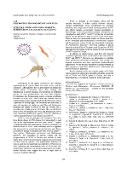Phlebovirus Transmission by Sand Flies

Datum vydání
2022Publikováno v
Czech Chemical Society Symposium SeriesNakladatel / Místo vydání
(Praha)Ročník / Číslo vydání
20 (6)ISBN / ISSN
ISSN: 2336-7202Metadata
Zobrazit celý záznamKolekce
Abstrakt
Arboviruses of the genus Phlebovirusare currently represented by 67 species found in Eurasia, Africa, and the Americas1. Although they have a great impact on human and animal health, information about their biology and transmission is mostly missing. The predicted or confirmed vectors of most phleboviruses are sand flies (Diptera: Psychodidae), tiny bloodsucking insectsoccurring in latitudes between 50°Nand 40°S. Both males and females feed on anatural sugar source, females need also the blood as a source of proteins to develop eggs. Our laboratory has more than 25 years of experience in studies on sand flies and Leishmania, maintains the largest collection of sand fly colonies and is considered as a leading team in this area. Here we decided to focus on the development, life cycle, and transmission of two most important phlebovirus species: c(TOSV) and Rift Valley Fever phlebovirus(RVFV).
Klíčová slova
sand flies, Toscana phlebovirus, Rift Valley Fever phlebovirus
Trvalý odkaz
https://hdl.handle.net/20.500.14178/1803Licence
Tento výsledek je zpřístupněn v režimu gratis open access, tj. pouze pro čtení. V souladu s § 30 zákona č. 121/2000 Sb., autorského zákona, lze plný text z repozitáře také stáhnout, případně vytisknout, ale pouze pro osobní potřebu.




